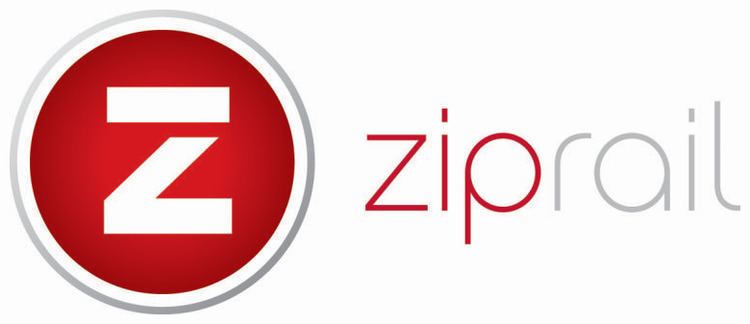 | ||
Owner Olmsted County Regional Railroad Authority | ||
Zip Rail was a proposed intrastate passenger train that would link the Minneapolis–Saint Paul metropolitan area with the city of Rochester. The project was previously branded as Rochester Rail Link.
Contents
- Past studies
- Tri State Study
- Tri State II Study
- Rochester Rail Link Study
- Tri State III Study
- Past passenger service to Rochester
- References
North American High Speed Rail Group (NAHSR) proposed building a HSR line on the same route. This is a separate proposal not connected with Zip Rail.
In 2016 the Minnesota Department of Transportation suspended its work on the Zip Rail project.
Past studies
Previous to Zip Rail, supporters had pushed for a Chicago - Minneapolis High Speed Rail ( HSR ) routing through the city of Rochester. This routing was not chosen, largely due to the added costs to routing to Rochester versus the Mississippi River corridor.
Tri-State Study
The Tri-State Rail Study was commissioned by the Illinois, Wisconsin, and Minnesota Departments of Transportation (hence the "Tri-State" name) and was completed in 1991. It examined the feasibility of train services on several routes, narrowed to two by 1990. The current route of Amtrak's Empire Builder was among those discarded and not studied in detail, but it was listed as a simple route comparison.
The study concluded that the "Amtrak upgrade" 125 mph option on the southern corridor through Rochester had the best direct return on investment, and was the best option for a capital-constrained public endeavor. In all cases, the southern corridor outperformed the northern corridor in the long term. The study made mention of "newly introduced Swedish Railroad 'tilt' technology", but it was not studied.
Tri-State II Study
The Tri-State II High Speed Rail Feasibility Study was commissioned by the Minnesota and Wisconsin Departments of Transportation and built upon the previous Tri-State study, plans from the Midwest Regional Rail Initiative (MWRRI), and a 1997 study looking at the Chicago–Milwaukee corridor. Since the MWRRI plans advocate 110 mph diesel or diesel multiple unit (DMU) technology (described as "incremental" by the study authors), this was used as the base case for the study.
This study also included gas turbine-powered trains, in comparison to diesels and electrics. It concluded that gas turbines operating at 150 mph were the best option. Development could begin at 110 mph, but the study authors stated the corridor should be developed to 150 mph standards to allow faster trains later.
Rochester Rail Link Study
In contrast to the previous two studies, the 2003 Rochester Rail Link Feasibility Study focused on a line to Rochester from the Twin Cities, but avoided discussing the merits of the city's presence on a line to Chicago in significant depth. The routes recommended in that study had one terminus at the Rochester International Airport (RST) at the southern end, and examined linking to downtown Minneapolis and to Minneapolis-St. Paul International Airport (MSP).
The study examined three motive-power options and recommended a TGV-like service linking the Twin Cities and Rochester using electrified trains operating at speeds up to 185 mph (298 km/h). In this study, the trains would carry a mixture of passengers and cargo, allowing the Rochester airport to take over some of the air freight capacity of MSP. In the leading example, a rate of 20 passenger trains per day was proposed, plus 4 freight trains in the overnight hours. The passenger estimates were made not based on projected market demand and supply but on a simplified model that if X number of seats were available, Y percentage of those seats would be filled at a Z price. The cost estimate for building the electrified line was $869 to $933 million (2002 dollars), largely depending on whether an entirely new route was used or if the line would closely follow Highway 52. The analysis claimed that the line would eventually pay for itself with passenger and cargo revenues more than covering the capital and operational costs over a 30-year period.
Tri-State III Study
The Tri-State III High-Speed Rail Study of 2009 was commissioned by the Southeastern Minnesota Rail Alliance, a rail advocacy group based in Rochester. This study is partly a rehashing of the Tri-State II study, but with greater detail in examining the speeds possible along the current Amtrak route along the Mississippi River versus what would be possible by going through Rochester. There are many segments along the river that can only support 90 mph top speeds or lower due to curvature.
The study asserted that 220 mph service via Rochester, which is a higher speed than what has been recommended in other studies for a publicly funded system, would be the best option and would be the most profitable. The study authors noted that the amount of funding available for the project in Minnesota is constrained. Because of this they suggested going utilizing diesel-electric powered 110 mph service via Rochester. They claimed this would be profitable. They called for the route to allow for future upgrades and improvements that could be done over time.
Past passenger service to Rochester
Rochester previously had passenger service run by the Chicago and North Western and the Chicago Great Western railways. Rail passenger service to the city ended in 1963.
Rochester was served by many numbered trains. Named trains included the following:
Chicago and North Western:
Chicago Great Western:
